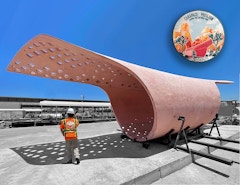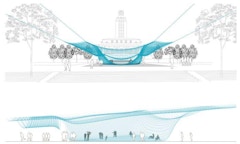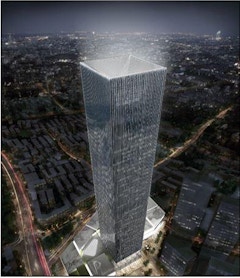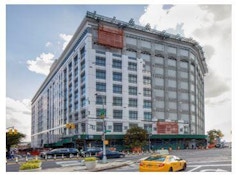
14 results
-
 There were good why reasons early US Modernism first evolved in California– wide open sites with no constraints (physical or zoning), and effectively…
There were good why reasons early US Modernism first evolved in California– wide open sites with no constraints (physical or zoning), and effectively… -
Patchwork
- Paper by Alexander G. Worden, AIA
It may be difficult for modern man to believe that what is known as handicraft was once the advanced manufacturing of the day. These techniques were
-
Delivering Beauty
- Paper by Michael Mulhern,
Amidst the critical conversations about the need to build better and more efficient building skins, designers are also mindful of the need for the… -

Air Spaces Changed Everything
- Paper by Gerry Lang, M.Arch., (Penn, 2008), B. Arch (hons., Toronto, 1978) OAA, AIA,TSA, Senior Associate, Leader of Facades Group
This abstract proposes that architectural facade design over the last 60 years has convulsed in light of two disruptions: air spaces which create… -
Edge Lighting Glazing with Hidden Fixtures
- Paper by Dave McCarroll · Dan Weinreber · Lei Fu
Dynamic architectural lighting in urban areas is a key element in creating attractive nighttime icons in addition to potentially generating
-

Form Follows Well-Being
- Paper by David Bjelland M.Sc. · Prof. Dr. sc. hum. MArch Dipl.-Ing. Timo Schmidt
Recent planning recognizes a growing demand for buildings that provide higher levels of occupant well-being. Often, well-being in buildings is
-

Collaborative Methodology for Fastracking Challenging Facade Concepts
- Paper by Stuart Berriman, Peter Simmonds, Ph.D., FASHRAE, FIBPSA, FFTI,
The goal is to explore the role and methodology employed between the architect and engineer as they look to resolve the opposing demands of design… -
Terracotta 1912 to 2018
- Paper by Carol Loewenson, FAIA, LEED AP · Stephen Dietz, AIA, LEED AP
Center Three is a 100-year-old, one million square-foot building in Long Island City, New York that was constructed over the course of one year. It
-

Retrofit Options for Historic Facades
- Paper by Carrie Davis, P.E., LEED Green Assoc., George Kantrales, Ph.D., Matt Barsotti, Andrew Schoenheit, Ty Vandergriff,
Building design criteria requires that government buildings be designed for a variety of extreme loads including blast, hurricane, and impact… -
Mastery of Measurement
- Paper by Joshua Zabel
The conventional approach to specifying dimensional tolerances in architecture and construction is inadequate in the theater of premanufacturing
-

Preserving a Historic Facade
- Paper by Maria Mohammed, S.E., Design Engineer John Fidler, RIBA, Intl Assoc AIA, FRICS, FSA, FRSA, FIIC, FAPT, President
Environmental and socio-economic benefits of sustainable preservation have become apparent most recently in the restoration of the historic former… -

The Carapace Pavilion
- Paper by Douglas Noble, PhD, FAIA · Karen M. Kensek, DPACSA
The Carapace Pavilion is a university-based, design-build, full-scale custom prototype for a possible replacement of the standard precast concrete
-
The Vertical Campus Facade
- Paper by Mayine Yu, AIA, Principal | Davis Brody Bond / Page Cooper Schilling, AIA, LEED AP BD+C, Principal | KieranTimberlake Jessica Young, RA, Principal
Case study of the recently opened John A. Paulson Center for New York University in Manhattan reviews design solutions of façade depth and scale to… -

ACT Facade
- Paper by Paul-Rouven Denz, Daniel Arztmann, Dipl.-Ing., M.Eng., EFN, FTI Professor for Façade Construction, Technische Hochschule Ostwestfalen Lippe (TH-OWL) Head of Building Physics Natchai Suwannapruk,
Due to material and technological advancement during the last century, transparency has become a prominent trend in contemporary architecture.…


